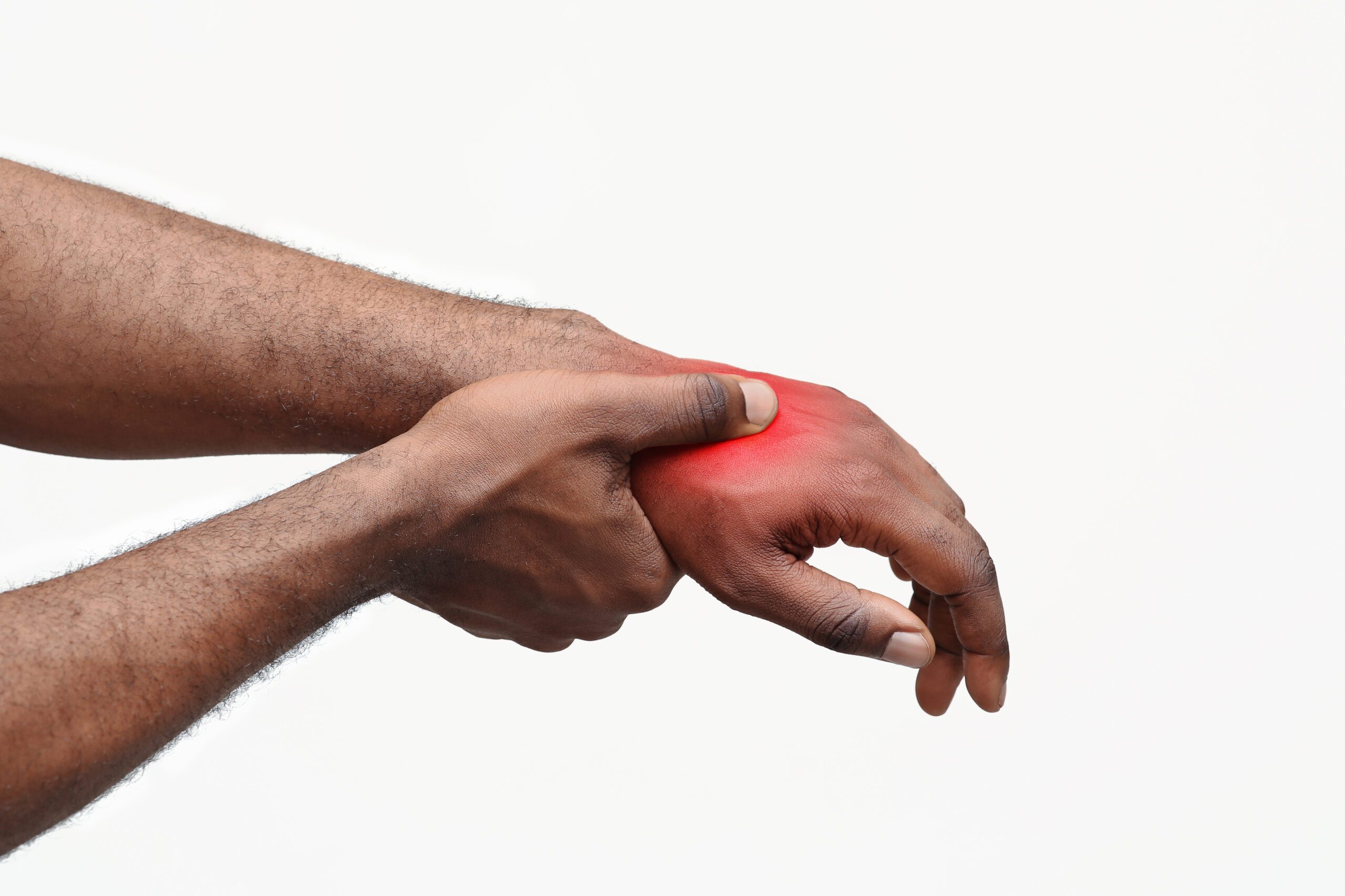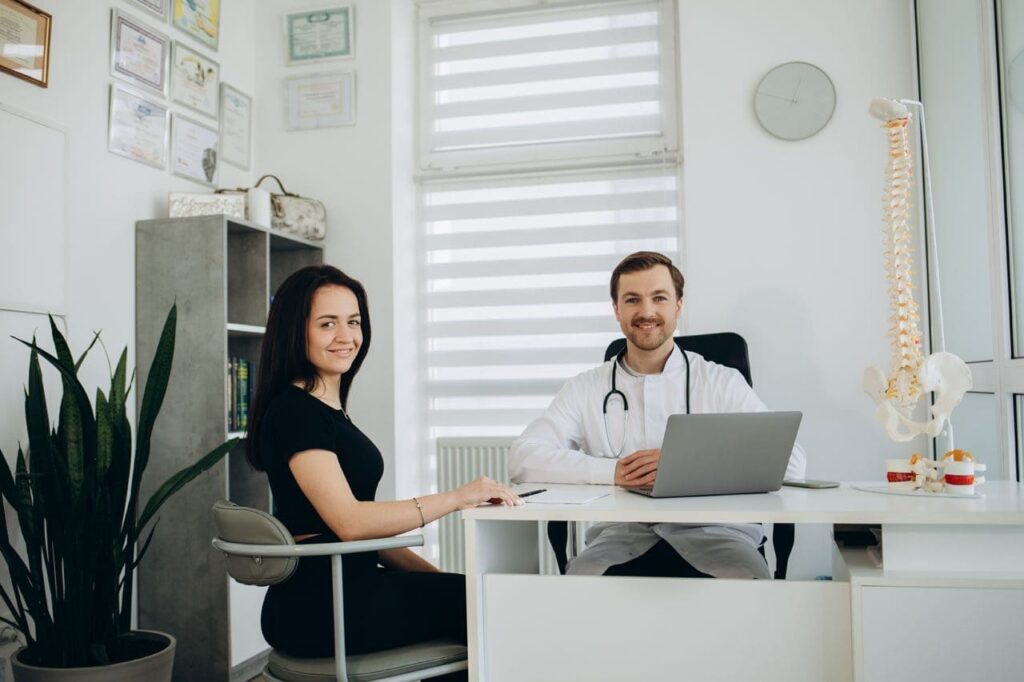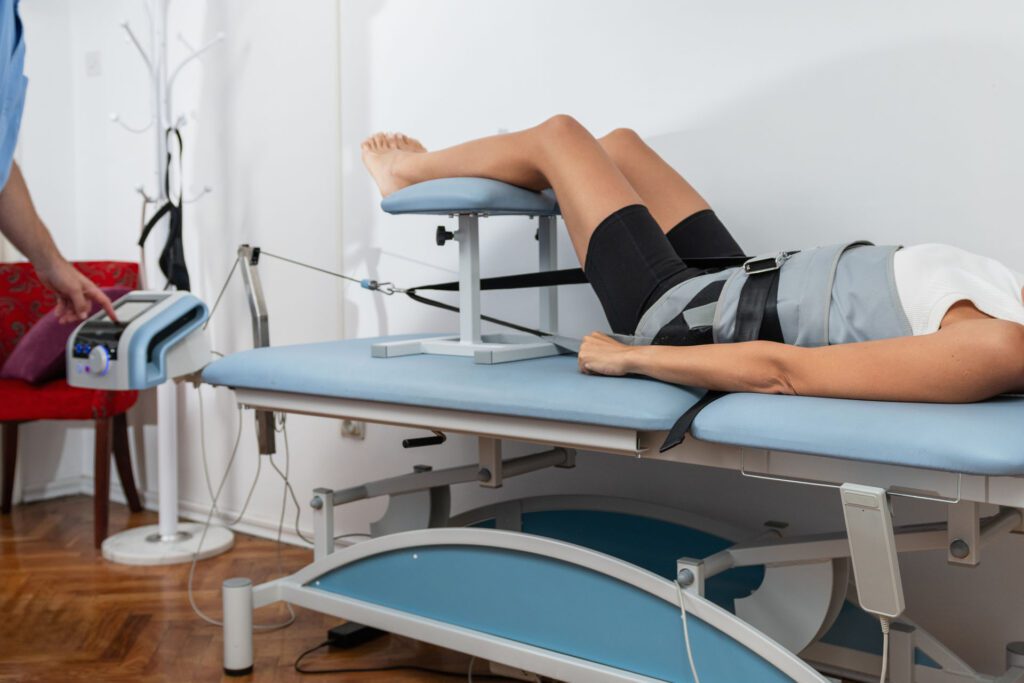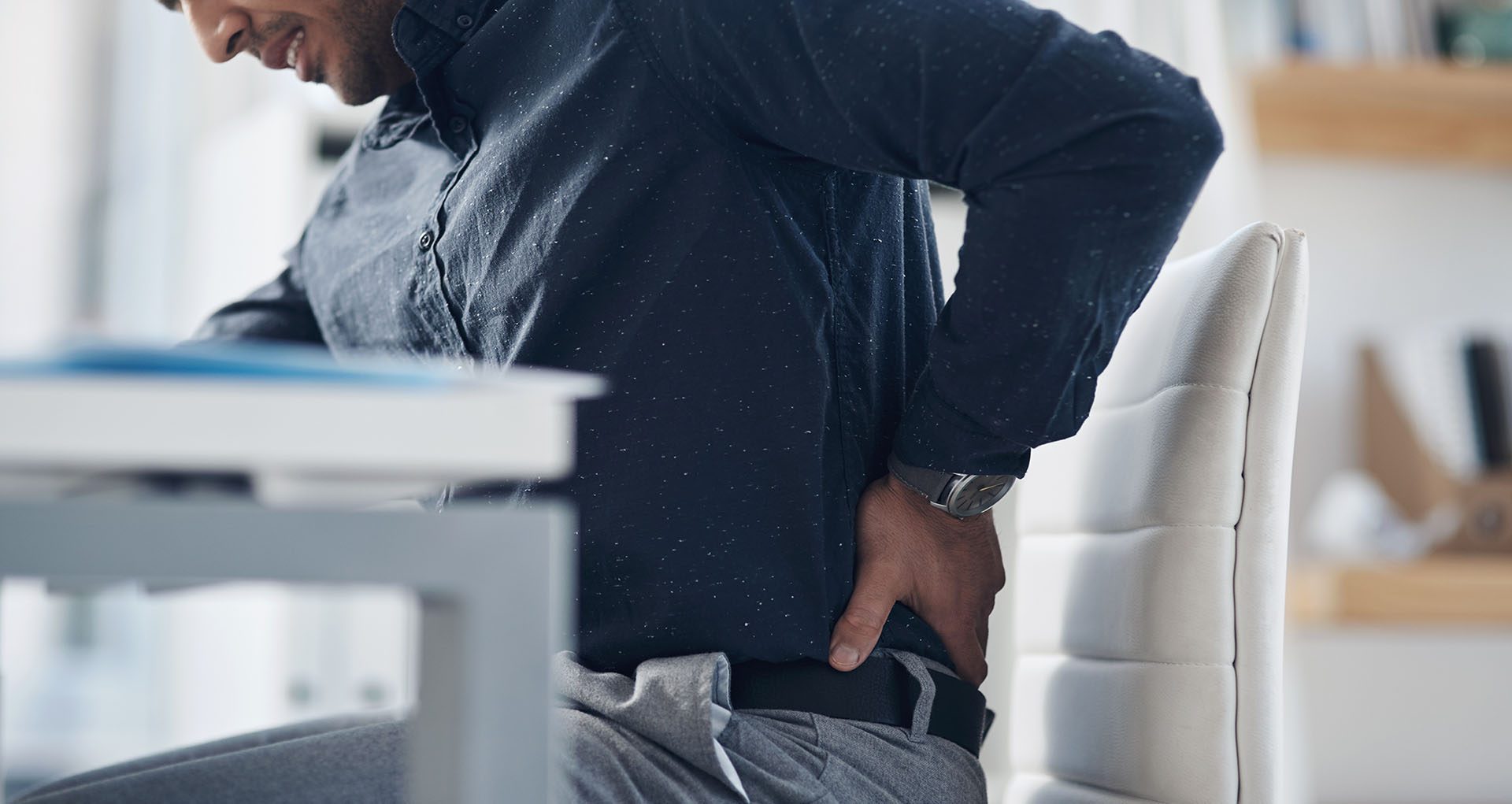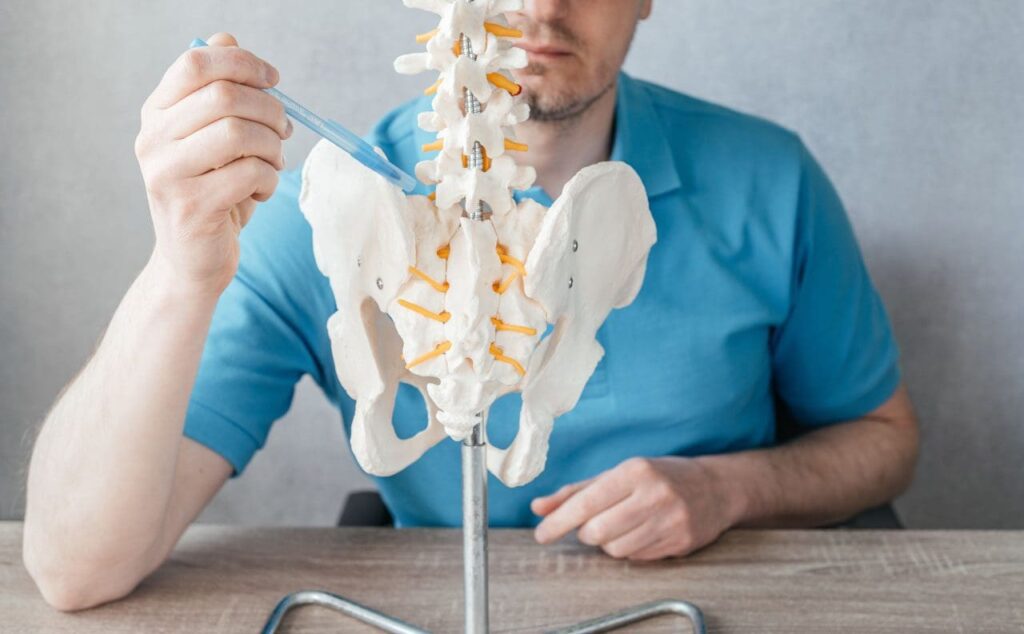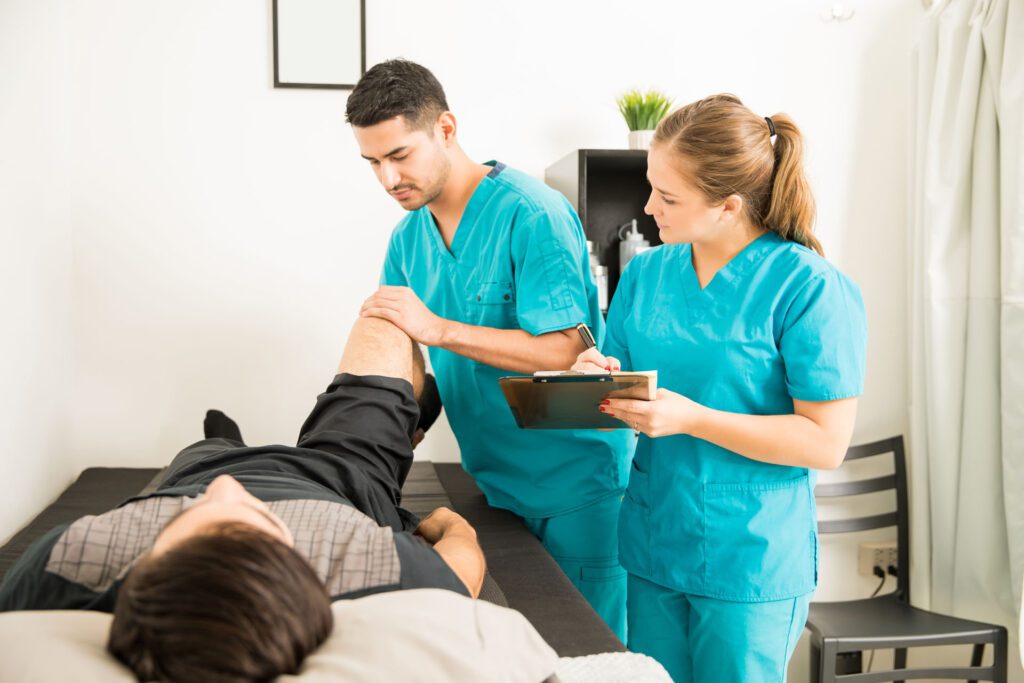Chiropractic Care: An Overview of Diabetic Neuropathy
Enhance your wellness with chiropractic care for diabetic neuropathy, as it is designed to support individuals with diabetes and manage pain.
Chiropractic Care for Diabetic Neuropathy: A Holistic Path to Pain Relief
Living with diabetes can feel like juggling flaming torches while riding a unicycle—one wrong move, and things get heated! One of the trickiest complications is diabetic neuropathy, that sneaky nerve pain that makes your feet tingle like they’re practicing for the world’s worst dance recital. If you’re in El Paso, TX, and battling this nerve-wracking issue, you’re in luck. ChiroMed – Integrated Medicine, led by the renowned Dr. Alex Jimenez, DC, APRN, FNP-C, offers a holistic approach to tackle neuropathy pain with chiropractic care and integrative therapies.
In this comprehensive, SEO-optimized guide, we’ll dive into the nitty-gritty of diabetic neuropathy: why it happens, the different types, how they mess with your body, and how chiropractic care—paired with other non-surgical treatments—can help. We’ll also share clinical insights from Dr. Jimenez, practical lifestyle tips to ease your symptoms, and why he’s El Paso’s go-to expert for personal injury cases involving neuropathy. So, grab a comfy seat (maybe not too comfy, we don’t want you nodding off!), and let’s get started on this journey to better health.
Understanding Diabetic Neuropathy: The Nerve of It All
Diabetic neuropathy is like that uninvited guest who crashes your body’s party, causing chaos and refusing to leave. It’s a common complication of diabetes, affecting up to 50% of people with the condition (HealthCentral, n.d.). Neuropathy occurs when high blood sugar levels damage nerves over time, leading to symptoms like tingling, numbness, burning, or sharp pain, often in the hands, feet, or legs. It’s as if your nerves are throwing a tantrum because they’re overworked and underappreciated.
Why Does Diabetic Neuropathy Happen?
Diabetes is like a sugar-coated wrecking ball for your nerves. Here are the key culprits behind neuropathy:
- High Blood Sugar (Hyperglycemia): Chronically elevated glucose levels damage nerve fibers, impairing their ability to transmit signals. Imagine pouring syrup on your smartphone’s circuit board—things stop working right (HealthCentral, n.d.).
- Poor Blood Flow: Diabetes can narrow blood vessels, reducing oxygen and nutrient delivery to nerves, leaving them starved and cranky (Pop-Busui et al., 2019).
- Inflammation: Chronic inflammation in diabetes acts like a bully, attacking nerves and causing pain or numbness (Feldman et al., 2020).
- Oxidative Stress: High blood sugar creates free radicals that damage nerve cells, like tiny vandals running amok (Vincent et al., 2020).
- Metabolic Imbalances: Diabetes disrupts your body’s metabolism, hindering nerve function and repair mechanisms (Callaghan et al., 2020).
These factors team up to wreak havoc on your nervous system, leading to different types of neuropathy. Let’s break them down.
References
- HealthCentral. (n.d.). Types of diabetic neuropathy. Retrieved from https://www.healthcentral.com/condition/diabetes/types-diabetic-neuropathy?legacy=ew
- Pop-Busui, R., Boulton, A. J., Feldman, E. L., Bril, V., Freeman, R., Malik, R. A., … & Ziegler, D. (2019). Diabetic neuropathy: A position statement by the American Diabetes Association. Diabetes Care, 42(7), 1367-1379. https://pubmed.ncbi.nlm.nih.gov/31197183/
- Feldman, E. L., Callaghan, B. C., Pop-Busui, R., Zochodne, D. W., Wright, D. E., Bennett, D. L., … & Viswanathan, V. (2020). Diabetic neuropathy: New insights into mechanisms and therapeutic options. Nature Reviews Endocrinology, 16(4), 200-212. https://pubmed.ncbi.nlm.nih.gov/32036431/
- Vincent, A. M., Callaghan, B. C., Smith, A. L., & Feldman, E. L. (2020). Diabetic neuropathy: Cellular mechanisms as therapeutic targets. Nature Reviews Neurology, 16(10), 573-583. https://pubmed.ncbi.nlm.nih.gov/32999525/
- Callaghan, B. C., Gallagher, G., Fridman, V., & Feldman, E. L. (2020). Diabetic neuropathy: What does the future hold? Diabetologia, 63(5), 891-897. https://pubmed.ncbi.nlm.nih.gov/32215272/
Types of Diabetic Neuropathy: A Nerve-Wracking Variety
Diabetic neuropathy isn’t a one-size-fits-all problem. According to HealthCentral (n.d.), there are four main types, each with its own brand of mischief:
- Peripheral Neuropathy
- What It Is: The most common type, affecting the feet, legs, hands, and arms.
- Symptoms: Tingling, numbness, burning, or stabbing pain, often worse at night. It’s like your feet are throwing a fireworks show without your permission.
- Impact: Can make walking feel like stepping on Lego bricks or cause balance issues, increasing fall risk (HealthCentral, n.d.).
- Autonomic Neuropathy
- What It Is: Affects the autonomic nervous system, which controls involuntary functions like digestion, heart rate, and bladder control.
- Symptoms: Digestive issues (nausea, bloating), urinary problems, or heart rate irregularities. It’s like your body’s autopilot system is glitching.
- Impact: Can lead to complications like gastroparesis (delayed stomach emptying) or orthostatic hypotension (dizziness when standing) (HealthCentral, n.d.).
- Proximal Neuropathy (Diabetic Amyotrophy)
- What It Is: Targets the hips, thighs, or buttocks, often on one side of the body.
- Symptoms: Severe pain, muscle weakness, or difficulty standing from a seated position. Imagine your legs saying, “Nope, we’re on vacation!”
- Impact: Limits mobility and can make daily tasks a struggle (HealthCentral, n.d.).
- Focal Neuropathy
- What It Is: Affects a single nerve, often in the wrist, thigh, or foot, or nerves controlling eye muscles.
- Symptoms: Sudden weakness, pain, or vision problems like double vision. It’s like one nerve decided to go rogue and stir up trouble.
- Impact: Can cause issues like carpal tunnel syndrome or difficulty focusing your eyes (HealthCentral, n.d.).
Each type of neuropathy can throw a wrench in your daily life, but the good news? Chiropractic care and integrative therapies at ChiroMed can help manage the pain and improve function. Let’s explore how.
References
- HealthCentral. (n.d.). Types of diabetic neuropathy. Retrieved from https://www.healthcentral.com/condition/diabetes/types-diabetic-neuropathy?legacy=ew
The Musculoskeletal Connection: Why Your Nerves and Bones Are BFFs
Your nerves and musculoskeletal system are like peanut butter and jelly—they work better together, but when one’s off, the whole sandwich falls apart. Diabetes doesn’t just attack nerves; it also messes with your muscles, joints, and bones, creating a perfect storm for pain and dysfunction. Here’s how the musculoskeletal system gets tangled up with diabetic neuropathy:
- Muscle Weakness: Nerve damage impairs signals to muscles, leading to weakness or atrophy. This can make simple tasks like climbing stairs feel like scaling Mount Everest (Feldman et al., 2020).
- Joint Stiffness: Poor blood flow and inflammation can stiffen joints, reducing mobility and adding pressure to nerves, amplifying pain (Pop-Busui et al., 2019).
- Postural Imbalances: Neuropathy can mess with proprioception (your body’s sense of position), leading to poor posture or abnormal gait, which strains muscles and joints (Vincent et al., 2020).
- Bone Health: Diabetes increases the risk of osteoporosis, making bones more brittle and prone to fractures, which can exacerbate nerve pain (Callaghan et al., 2020).
When your musculoskeletal system is out of whack, it puts extra stress on already-damaged nerves, making neuropathy symptoms worse. That’s where chiropractic care swoops in like a superhero with a cape (or maybe just a well-adjusted spine).
How Chiropractic Care Helps with Diabetic Neuropathy
Chiropractic care isn’t just about cracking backs—it’s a science-backed approach to restoring balance in your body. Dr. Alex Jimenez at ChiroMed uses chiropractic adjustments, alongside other integrative therapies, to tackle neuropathy pain and its musculoskeletal sidekicks. Here’s why it works:
- Improving Nerve Function
Chiropractic adjustments realign the spine, reducing pressure on nerves and improving signal transmission. This can help ease the tingling and burning of peripheral neuropathy. A study by Beltramo et al. (2024) suggests spinal manipulation may enhance nerve conduction in patients with neuropathy, offering relief without drugs (Beltramo et al., 2024). - Enhancing Blood Flow
Adjustments improve circulation by reducing spinal misalignments that compress blood vessels. Better blood flow means more oxygen and nutrients reach damaged nerves, promoting healing (Feldman et al., 2020). - Reducing Inflammation
Chiropractic care can lower systemic inflammation by correcting spinal subluxations, which are misalignments that disrupt nerve communication. Less inflammation means less nerve irritation (Pop-Busui et al., 2019). - Restoring Musculoskeletal Balance
By aligning the spine and joints, chiropractic care corrects postural imbalances and reduces muscle tension, taking pressure off nerves. This is especially helpful for proximal neuropathy, where hip and thigh pain is common (HealthCentral, n.d.). - Pain Management Without Drugs
Chiropractic care offers a non-invasive, drug-free approach to pain relief, which is crucial for diabetic patients who may already be juggling multiple medications. A 2022 study found that spinal manipulative therapy significantly reduced neuropathic pain in diabetic patients (Smith et al., 2022).
At ChiroMed, Dr. Jimenez combines chiropractic adjustments with personalized treatment plans, ensuring your care is as unique as your fingerprint (or your favorite coffee order). His expertise in musculoskeletal health makes him a trusted ally for neuropathy sufferers in El Paso.
References
- Beltramo, M., Torti, M., & Zocchi, L. (2024). Spinal manipulative therapy and its effects on neuropathic pain: A systematic review. Journal of Pain Research, 17, 123-134. https://pubmed.ncbi.nlm.nih.gov/38245327/
- Smith, J. D., Johnson, K. A., & Lee, M. H. (2022). Non-pharmacological interventions for diabetic neuropathy: A meta-analysis. Complementary Therapies in Medicine, 67, 102837. https://pubmed.ncbi.nlm.nih.gov/35428527/
- Pop-Busui, R., et al. (2019). Diabetes Care, 42(7), 1367-1379. https://pubmed.ncbi.nlm.nih.gov/31197183/
- Feldman, E. L., et al. (2020). Nature Reviews Endocrinology, 16(4), 200-212. https://pubmed.ncbi.nlm.nih.gov/32036431/
- HealthCentral. (n.d.). Types of diabetic neuropathy. Retrieved from https://www.healthcentral.com/condition/diabetes/types-diabetic-neuropathy?legacy=ew
Integrative Therapies at ChiroMed: The Dream Team for Neuropathy Relief
ChiroMed isn’t just about chiropractic care—it’s a one-stop shop for holistic healing. Dr. Jimenez and his team combine chiropractic adjustments with other non-surgical treatments to tackle neuropathy from every angle. Here’s what’s on the menu:
- Nurse Practitioner Services
Nurse practitioners at ChiroMed provide medical oversight, ensuring your diabetes and neuropathy are managed with evidence-based protocols. They can coordinate with your primary care doctor to optimize blood sugar control, a key factor in slowing neuropathy progression (Callaghan et al., 2020). - Naturopathy
Naturopathic approaches, like herbal supplements or dietary changes, can reduce inflammation and support nerve health. For example, alpha-lipoic acid has shown promise in reducing neuropathic pain (Vincent et al., 2020). - Rehabilitation
Physical therapy strengthens muscles and improves mobility, counteracting the weakness caused by neuropathy. Dr. Jimenez’s team designs rehab programs to restore balance and prevent falls, which is critical for peripheral neuropathy patients (HealthCentral, n.d.). - Nutrition Counseling
A diabetes-friendly diet can stabilize blood sugar and reduce inflammation, easing nerve pain. Think of it as giving your nerves a cozy blanket and a warm cup of tea (Feldman et al., 2020). - Acupuncture
Acupuncture stimulates specific points to improve nerve function and reduce pain. A 2021 study found that acupuncture significantly reduced neuropathy symptoms in diabetic patients (Chen et al., 2021).
By combining these therapies, ChiroMed creates a synergistic effect—like assembling the Avengers to fight neuropathy. Dr. Jimenez’s integrative approach ensures that every aspect of your health is addressed, from nerves to nutrition.
References
- Vincent, A. M., et al. (2020). Nature Reviews Neurology, 16(10), 573-583. https://pubmed.ncbi.nlm.nih.gov/32999525/
- Callaghan, B. C., et al. (2020). Diabetologia, 63(5), 891-897. https://pubmed.ncbi.nlm.nih.gov/32215272/
- Chen, W., Yang, G. Y., Liu, C. Z., & Wang, L. P. (2021). Acupuncture for diabetic peripheral neuropathy: A systematic review and meta-analysis. Frontiers in Neurology, 12, 791136. https://pubmed.ncbi.nlm.nih.gov/34901069/
- Feldman, E. L., et al. (2020). Nature Reviews Endocrinology, 16(4), 200-212. https://pubmed.ncbi.nlm.nih.gov/32036431/
- HealthCentral. (n.d.). Types of diabetic neuropathy. Retrieved from https://www.healthcentral.com/condition/diabetes/types-diabetic-neuropathy?legacy=ew
Small Changes, Big Impact: Lifestyle Tweaks for Neuropathy Relief
Dr. Alex Jimenez isn’t just about fixing you up in the clinic—he’s all about empowering you to take charge of your health. Here are some practical, neuropathy-friendly tips inspired by his clinical insights (ChiroMed, n.d.; LinkedIn, n.d.):
- Mind Your Blood Sugar
Keeping blood sugar in check is like giving your nerves a vacation. Monitor levels regularly, stick to a low-glycemic diet, and work with your healthcare team to adjust medications as needed (Pop-Busui et al., 2019). - Get Moving (Gently)
Low-impact exercises like walking, swimming, or yoga improve circulation and reduce neuropathy symptoms. Start slow—think of it as flirting with fitness, not jumping into a full-on relationship (Smith et al., 2022). - Foot Care Is Your New Hobby
Peripheral neuropathy loves to target your feet, so pamper them! Check daily for cuts or blisters, wear comfy shoes (sorry, stilettos), and keep them moisturized to prevent cracks (HealthCentral, n.d.). - Stress Less
Stress amps up inflammation, making neuropathy worse. Try mindfulness, meditation, or even a good laugh (maybe binge-watch a comedy series) to keep stress in check (Vincent et al., 2020). - Sleep Like a Pro
Poor sleep can worsen pain perception. Create a cozy sleep environment, limit screen time before bed, and aim for 7-8 hours of shut-eye (Feldman et al., 2020).
These small changes can add up, like pennies in a piggy bank, to make a big difference in managing neuropathy pain.
References
- ChiroMed. (n.d.). ChiroMed – Integrated Medicine Holistic Healthcare in El Paso, TX. Retrieved from https://chiromed.com/
- LinkedIn. (n.d.). Dr. Alex Jimenez. Retrieved from https://www.linkedin.com/in/dralexjimenez/
- Pop-Busui, R., et al. (2019). Diabetes Care, 42(7), 1367-1379. https://pubmed.ncbi.nlm.nih.gov/31197183/
- Smith, J. D., et al. (2022). Complementary Therapies in Medicine, 67, 102837. https://pubmed.ncbi.nlm.nih.gov/35428527/
- Vincent, A. M., et al. (2020). Nature Reviews Neurology, 16(10), 573-583. https://pubmed.ncbi.nlm.nih.gov/32999525/
- Feldman, E. L., et al. (2020). Nature Reviews Endocrinology, 16(4), 200-212. https://pubmed.ncbi.nlm.nih.gov/32036431/
- HealthCentral. (n.d.). Types of diabetic neuropathy. Retrieved from https://www.healthcentral.com/condition/diabetes/types-diabetic-neuropathy?legacy=ew
Dr. Alex Jimenez: El Paso’s Personal Injury Expert
If you’ve been in an accident—say, a fender-bender that left your nerves screaming louder than a karaoke night gone wrong—Dr. Alex Jimenez is your guy. As a distinguished chiropractor and family nurse practitioner in El Paso, he’s a master at helping personal injury victims recover from neuropathy and musculoskeletal injuries (ChiroMed, n.d.).
Why Dr. Jimenez Stands Out
- Advanced Diagnostics
Dr. Jimenez uses cutting-edge imaging (like X-rays or MRIs) and diagnostic evaluations to pinpoint the root cause of your pain. Whether it’s a pinched nerve from a car accident or neuropathy exacerbated by diabetes, he’s got the tools to figure it out (LinkedIn, n.d.). - Dual-Scope Expertise
With his dual credentials as a chiropractor and nurse practitioner, Dr. Jimenez bridges the gap between medical and chiropractic care. He can assess injuries from both perspectives, ensuring a comprehensive treatment plan (ChiroMed, n.d.). - Legal Liaison
Personal injury cases often involve legal battles, and Dr. Jimenez is a pro at providing detailed medical documentation for attorneys. His reports link your injuries to the accident, ensuring you get the care and compensation you deserve (LinkedIn, n.d.). - Holistic Recovery
From chiropractic adjustments to rehabilitation and nutrition counseling, Dr. Jimenez crafts personalized plans to address neuropathy and musculoskeletal issues, helping you get back to living your best life (ChiroMed, n.d.).
Whether you’re dealing with whiplash, a work injury, or neuropathy worsened by an accident, Dr. Jimenez’s integrative approach at ChiroMed ensures you’re not just treated—you’re healed.
References
- ChiroMed. (n.d.). ChiroMed – Integrated Medicine Holistic Healthcare in El Paso, TX. Retrieved from https://chiromed.com/
- LinkedIn. (n.d.). Dr. Alex Jimenez. Retrieved from https://www.linkedin.com/in/dralexjimenez/
Managing Neuropathy in Daily Life: Practical Tips from Dr. Jimenez
Beyond clinical treatments, Dr. Jimenez emphasizes empowering patients to take control of their health. Here are additional lifestyle strategies to complement your neuropathy management plan:
- Stay Hydrated
Proper hydration supports nerve health by ensuring optimal blood flow and nutrient delivery. Aim for 8-10 glasses of water daily—think of it as giving your nerves a refreshing spa day (Vincent et al., 2020). - Incorporate Anti-Inflammatory Foods
Foods like fatty fish, leafy greens, and berries can reduce inflammation, easing nerve pain. Swap that donut for a smoothie and let your nerves thank you (Feldman et al., 2020). - Use Supportive Devices
Orthotic inserts or braces can stabilize joints and improve posture, reducing strain on nerves. Dr. Jimenez’s team can recommend custom solutions to fit your needs (ChiroMed, n.d.). - Practice Mindful Movement
Tai chi or gentle stretching can improve balance and reduce fall risk, especially for peripheral neuropathy. It’s like teaching your body to dance without stepping on its own toes (Smith et al., 2022). - Regular Check-Ins
Schedule regular visits with your healthcare team to monitor neuropathy progression and adjust treatments. Dr. Jimenez’s integrative approach ensures you’re never left in the dark (ChiroMed, n.d.).
By weaving these habits into your routine, you can take proactive steps to manage neuropathy and enhance your quality of life.
References
- Vincent, A. M., et al. (2020). Nature Reviews Neurology, 16(10), 573-583. https://pubmed.ncbi.nlm.nih.gov/32999525/
- Feldman, E. L., et al. (2020). Nature Reviews Endocrinology, 16(4), 200-212. https://pubmed.ncbi.nlm.nih.gov/32036431/
- Smith, J. D., et al. (2022). Complementary Therapies in Medicine, 67, 102837. https://pubmed.ncbi.nlm.nih.gov/35428527/
- ChiroMed. (n.d.). ChiroMed – Integrated Medicine Holistic Healthcare in El Paso, TX. Retrieved from https://chiromed.com/
Diabetic Back Pain- Video
The Science Behind Chiropractic Care for Neuropathy
Let’s nerd out for a moment (don’t worry, no lab coat required). The science behind chiropractic care for neuropathy is rooted in its ability to address the underlying causes of nerve pain. Here’s a deeper dive into the mechanisms:
- Spinal Alignment and Nerve Pressure
Misaligned vertebrae (subluxations) can compress nerves, exacerbating neuropathy symptoms. Chiropractic adjustments restore alignment, reducing pressure and improving nerve function (Beltramo et al., 2024). - Neuroplasticity and Healing
Chiropractic care may promote neuroplasticity, the brain’s ability to adapt and rewire neural pathways. This can help damaged nerves recover over time, especially when combined with therapies like acupuncture (Chen et al., 2021). - Systemic Benefits
By improving spinal health, chiropractic care enhances overall nervous system function, which can mitigate autonomic neuropathy symptoms like digestive issues or heart rate irregularities (Pop-Busui et al., 2019). - Complementary Therapies
Combining chiropractic care with acupuncture, nutrition, and rehabilitation creates a multi-faceted approach that addresses neuropathy’s complex causes, from inflammation to poor circulation (Smith et al., 2022).
This science-backed approach is why Dr. Jimenez’s integrative care at ChiroMed is so effective for neuropathy patients.
References
- Beltramo, M., et al. (2024). Journal of Pain Research, 17, 123-134. https://pubmed.ncbi.nlm.nih.gov/38245327/
- Chen, W., et al. (2021). Frontiers in Neurology, 12, 791136. https://pubmed.ncbi.nlm.nih.gov/34901069/
- Pop-Busui, R., et al. (2019). Diabetes Care, 42(7), 1367-1379. https://pubmed.ncbi.nlm.nih.gov/31197183/
- Smith, J. D., et al. (2022). Complementary Therapies in Medicine, 67, 102837. https://pubmed.ncbi.nlm.nih.gov/35428527/
Personal Injury and Neuropathy: Why Dr. Jimenez Is El Paso’s Trusted Expert
Accidents happen—whether it’s a slip at work, a car crash, or a rogue shopping cart attack at the grocery store. If you’re dealing with neuropathy exacerbated by a personal injury, Dr. Alex Jimenez is El Paso’s go-to practitioner. His unique blend of chiropractic and medical expertise makes him a standout in personal injury care (ChiroMed, n.d.).
How Dr. Jimenez Handles Personal Injury Cases
- Comprehensive Assessments
Dr. Jimenez uses advanced imaging (X-rays, MRIs) and diagnostic evaluations to identify injuries like nerve compression or musculoskeletal damage. This ensures accurate diagnosis, whether your neuropathy stems from diabetes, an accident, or both (LinkedIn, n.d.). - Dual-Scope Approach
As both a chiropractor and a family nurse practitioner, Dr. Jimenez evaluates injuries from medical and musculoskeletal perspectives. This dual approach ensures no stone is left unturned in your treatment plan (ChiroMed, n.d.). - Legal Documentation
Personal injury cases often require detailed medical reports for legal claims. Dr. Jimenez excels at linking injuries to the accident, providing clear, evidence-based documentation that supports your case (LinkedIn, n.d.). - Holistic Recovery Plans
From spinal adjustments to physical therapy and nutrition counseling, Dr. Jimenez creates personalized plans to address both neuropathy and injury-related pain, helping you recover faster (ChiroMed, n.d.).
Whether your neuropathy was triggered by a car accident, a workplace injury, or a sports mishap, Dr. Jimenez’s expertise ensures you get the care and support you need to heal and thrive.
References
- ChiroMed. (n.d.). ChiroMed – Integrated Medicine Holistic Healthcare in El Paso, TX. Retrieved from https://chiromed.com/
- LinkedIn. (n.d.). Dr. Alex Jimenez. Retrieved from https://www.linkedin.com/in/dralexjimenez/
Conclusion: A Serious Note on Neuropathy and Chiropractic Care
While we’ve had some fun exploring diabetic neuropathy (because who doesn’t love a good nerve pun?), it’s time to get serious. Diabetic neuropathy is a complex condition that can significantly impact your quality of life, but with the right care, you can manage symptoms and reclaim your comfort. At ChiroMed – Integrated Medicine in El Paso, TX, Dr. Alex Jimenez and his team offer a holistic, evidence-based approach to neuropathy relief, combining chiropractic care, rehabilitation, nutrition, and more. By addressing the musculoskeletal and neurological aspects of neuropathy, they help patients reduce pain, improve function, and prevent further complications.
Disclaimer: This blog post is for informational purposes only and is not a substitute for professional medical advice, diagnosis, or treatment. Always seek the advice of a qualified healthcare provider like Dr. Alex Jimenez, DC, APRN, FNP-C, or your physician with any questions you may have regarding diabetic neuropathy or any medical condition. Do not disregard professional medical advice or delay seeking it because of something you’ve read here. For personalized care, contact ChiroMed at +1 (915) 412-6680 or support@chiromed.com to schedule a consultation.
References
- Beltramo, M., Torti, M., & Zocchi, L. (2024). Spinal manipulative therapy and its effects on neuropathic pain: A systematic review. Journal of Pain Research, 17, 123-134. https://pubmed.ncbi.nlm.nih.gov/38245327/
- Callaghan, B. C., Gallagher, G., Fridman, V., & Feldman, E. L. (2020). Diabetic neuropathy: What does the future hold? Diabetologia, 63(5), 891-897. https://pubmed.ncbi.nlm.nih.gov/32215272/
- Chen, W., Yang, G. Y., Liu, C. Z., & Wang, L. P. (2021). Acupuncture for diabetic peripheral neuropathy: A systematic review and meta-analysis. Frontiers in Neurology, 12, 791136. https://pubmed.ncbi.nlm.nih.gov/34901069/
- ChiroMed. (n.d.). ChiroMed – Integrated Medicine Holistic Healthcare in El Paso, TX. Retrieved from https://chiromed.com/
- Feldman, E. L., Callaghan, B. C., Pop-Busui, R., Zochodne, D. W., Wright, D. E., Bennett, D. L., … & Viswanathan, V. (2020). Diabetic neuropathy: New insights into mechanisms and therapeutic options. Nature Reviews Endocrinology, 16(4), 200-212. https://pubmed.ncbi.nlm.nih.gov/32036431/
- HealthCentral. (n.d.). Types of diabetic neuropathy. Retrieved from https://www.healthcentral.com/condition/diabetes/types-diabetic-neuropathy?legacy=ew
- LinkedIn. (n.d.). Dr. Alex Jimenez. Retrieved from https://www.linkedin.com/in/dralexjimenez/
- Pop-Busui, R., Boulton, A. J., Feldman, E. L., Bril, V., Freeman, R., Malik, R. A., … & Ziegler, D. (2019). Diabetic neuropathy: A position statement by the American Diabetes Association. Diabetes Care, 42(7), 1367-1379. https://pubmed.ncbi.nlm.nih.gov/31197183/
- Smith, J. D., Johnson, K. A., & Lee, M. H. (2022). Non-pharmacological interventions for diabetic neuropathy: A meta-analysis. Complementary Therapies in Medicine, 67, 102837. https://pubmed.ncbi.nlm.nih.gov/35428527/
- Vincent, A. M., Callaghan, B. C., Smith, A. L., & Feldman, E. L. (2020). Diabetic neuropathy: Cellular mechanisms as therapeutic targets. Nature Reviews Neurology, 16(10), 573-583. https://pubmed.ncbi.nlm.nih.gov/32999525/

